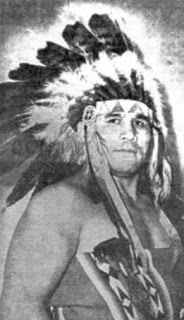 |
| 1606 19th Street, NW |
Major
media headlines on controversial or unusual inclusions in an individuals Last Will and Testament often make
readers reassess their own wills, or to write one for the first time. This has happened for well over a hundred years,
and a particular Will written in 1909 by D.C. resident Robert G. Dyrenforth
made sensational headlines in the local papers the following year, and was no doubt the
hot gossip that summer. Divorced in 1902,
the contents of his Will revealed a streaming discontent with his former wife
and the female gender as a whole, and set a multitude of impossible challenges
for his only heir, a grandson by the same name.
Robert St. George Dyrenforth was listed in the 1890 City Directory as a resident of a house coined
“Laurelwood” in Mount Pleasant. By 1896, however, he was listed along with
his wife Jennie in the Elite List as
a resident in a house at 1503
Rhode Island Avenue, N.W (replaced by a Holiday
Inn today). He listed himself as a
patent lawyer, and as the “Commander-in-Chief” of the Union Veterans’ Union, with an office at 602 F Street, N.W. He also was rather infamous for his attempts to create artificial rain. They later moved to a house at 1311 21st Street, N.W.,
where he would live until 1907. Divorced wife Jennie moved into 1606 19th Street that same year.
 |
| Robert Dyrenforth, WP July 1910 |
Dyrenforth
had been born in Chicago, Illinois on October 17, 1844. He was a cadet at Breslau,
Neisse, and Berlin, Prussia
from 1857 to 1861. He graduated in
electrical engineering from the Polytechnic school in Carlsruhe,
Baden, and from the University of Heidelberg
in 1869, with a Ph.D. He attended law
school and other programs at the Colombian (George Washington) University. He had served in the United States Army for
the Civil War, leaving service in the rank of Major.
Once
described as a flamboyant character, he served as a War correspondent for the Chicago Post and Times during the Austro-Prussian War in 1861, and entered service
in the Patent Office in 1871. He rose to
the rank of Principal Examiner, before practicing as a patent and corporation
lawyer beginning in 1885.
He
had married Jane “Jennie’ De Lacy in 1866.
They had four children together, including Bessie, who married Robert
McGrath. They had a son, and named him
Robert St. George Dyrenforth, Jr., after his grandfather. McGrath tragically died in 1899, when Robert
Jr. was just 12 months old, and Bessie died just a year later. In the meantime, Jennie, a Catholic, had obtained
a then rare legal separation from her estranged husband, and had alimony set in
the amount of $50 per month beginning in 1902.
She moved to 1606 19th
Street in 1907, with daughter Rose, while Robert moved
from apartment to apartment with their son Donald, and his orphaned grandson,
Robert, Jr.
 |
| Unhappy Grandson Robert Dyrenforth, Jr. |
Robert
Jr., did not go willingly, however, because he had been abducted from a nurse
during a stroll in DuPont Circle
by Robert Sr., in 1904. Jennie
Dyrenforth later told The Post that
“his grandfather turned him on me, as the affection years before was
lacking.” Courts later granted his wish
to adopt his grandson.
By
the time his Will was written in 1909, however, Robert Dyrenforth had clear
disdain for his wife, and all women, it seems.
Robert Jr., was set to inherit Dyrenforth’s estate, but not until 1926,
at the age of 28. He would have to meet
many and often bizarre stipulations in the Will, however, in order to inherit
the estate, which apparently included death benefits, property, furniture,
etc. His three brothers who lived in Chicago served as the
Executors and Trustees. Some of the
challenges read:
“I
particularly request my executors thoughtfully and well guard my beloved son
from women, and sensibly, that is, quietly, gradually, and impressively, though
to no erratic extreme, to let him be informed and know the indirect, artful,
and parasitical nature of most of the unfortunate sex, and to care that he may
not marry beneath him.”
“That
he [not] come under the influence of, or affiliate with, one Jennie Dyrenforth,
or with her daughter, one Rose Marie Knowlton.”
“Should
[Robert] be subject or exposed to the teachings of the Roman Catholic Church,
or become a Catholic, I hereby direct that each and every bequest herein…shall
become null and void...and pass absolutely to…the Scottish Rite of
Freemasonry.”
 I've enjoyed bringing the maps to the masses via excellent quality prints that we also sell on eBay. You can order any of the 44 maps in all, and they make for a great piece of interesting wall art. I'll link you to the popular Dupont Circle map HERE to get you started.
I've enjoyed bringing the maps to the masses via excellent quality prints that we also sell on eBay. You can order any of the 44 maps in all, and they make for a great piece of interesting wall art. I'll link you to the popular Dupont Circle map HERE to get you started.































